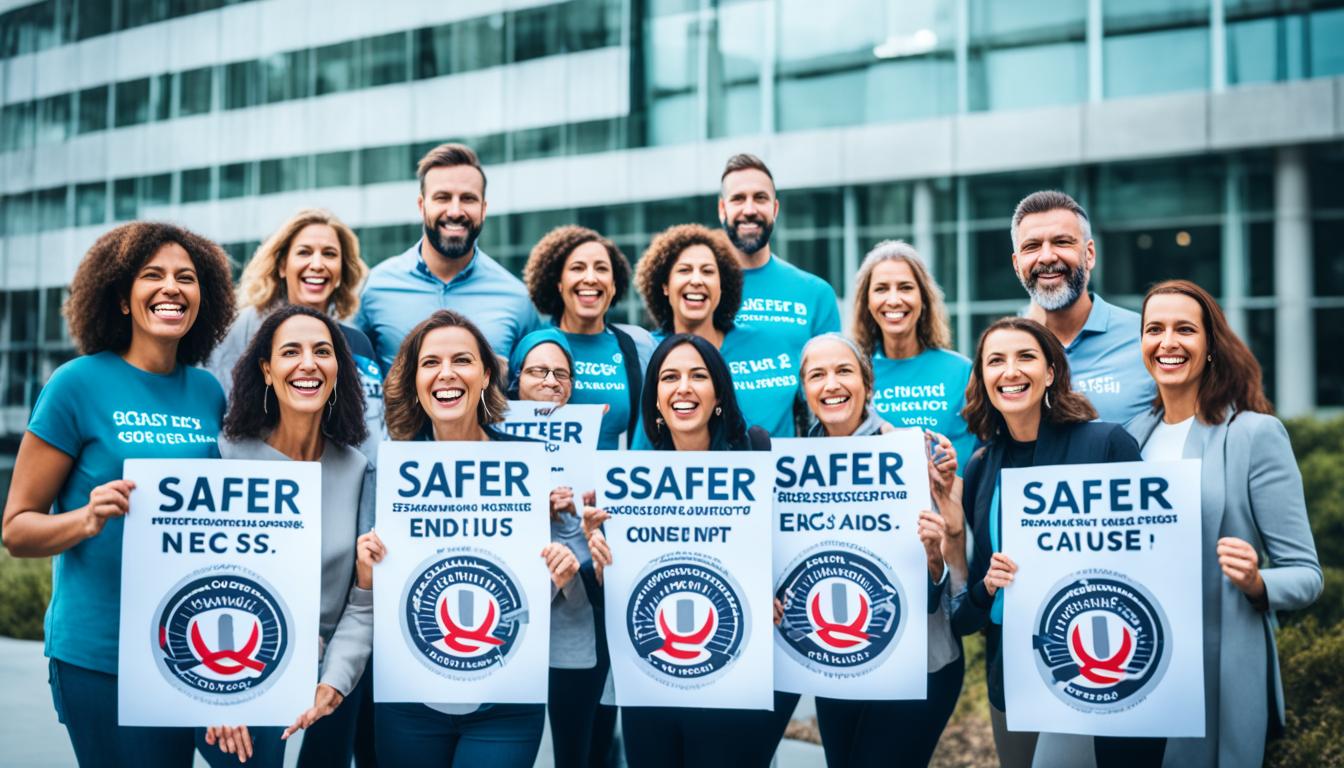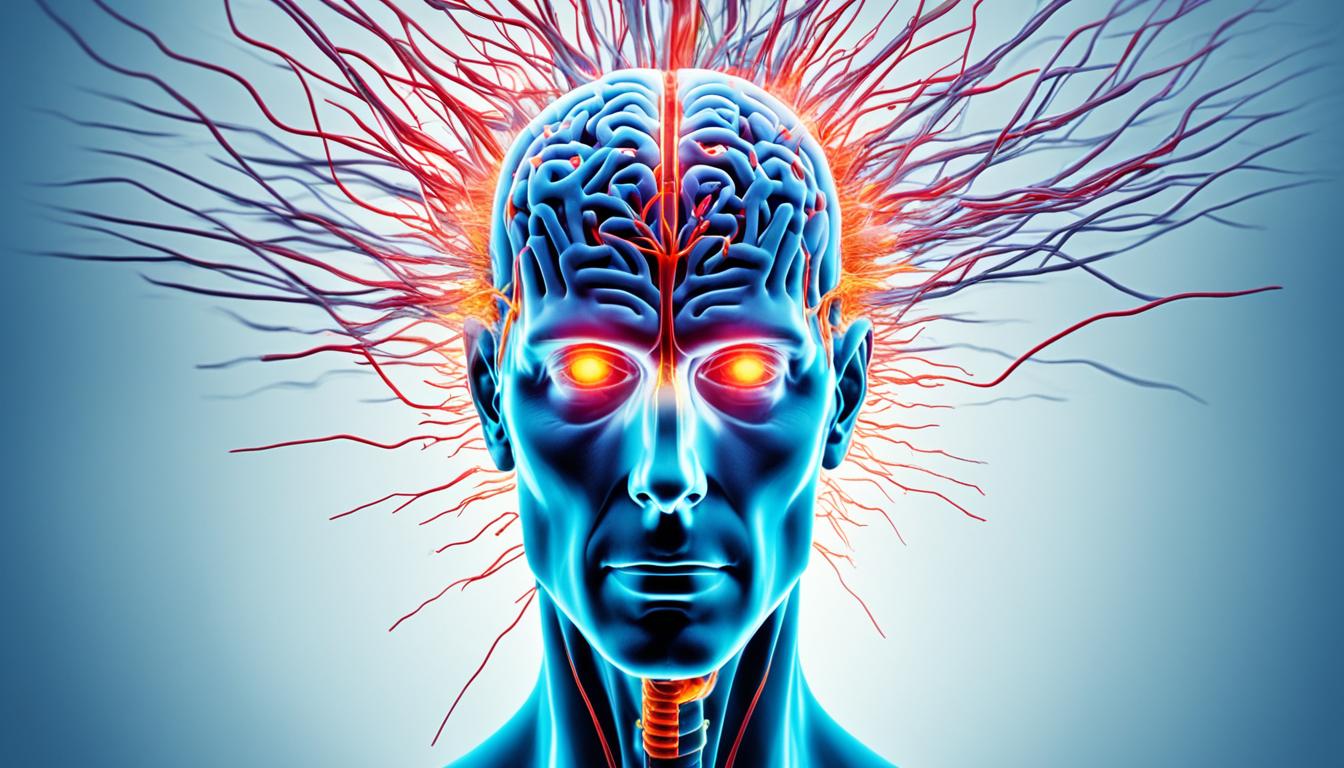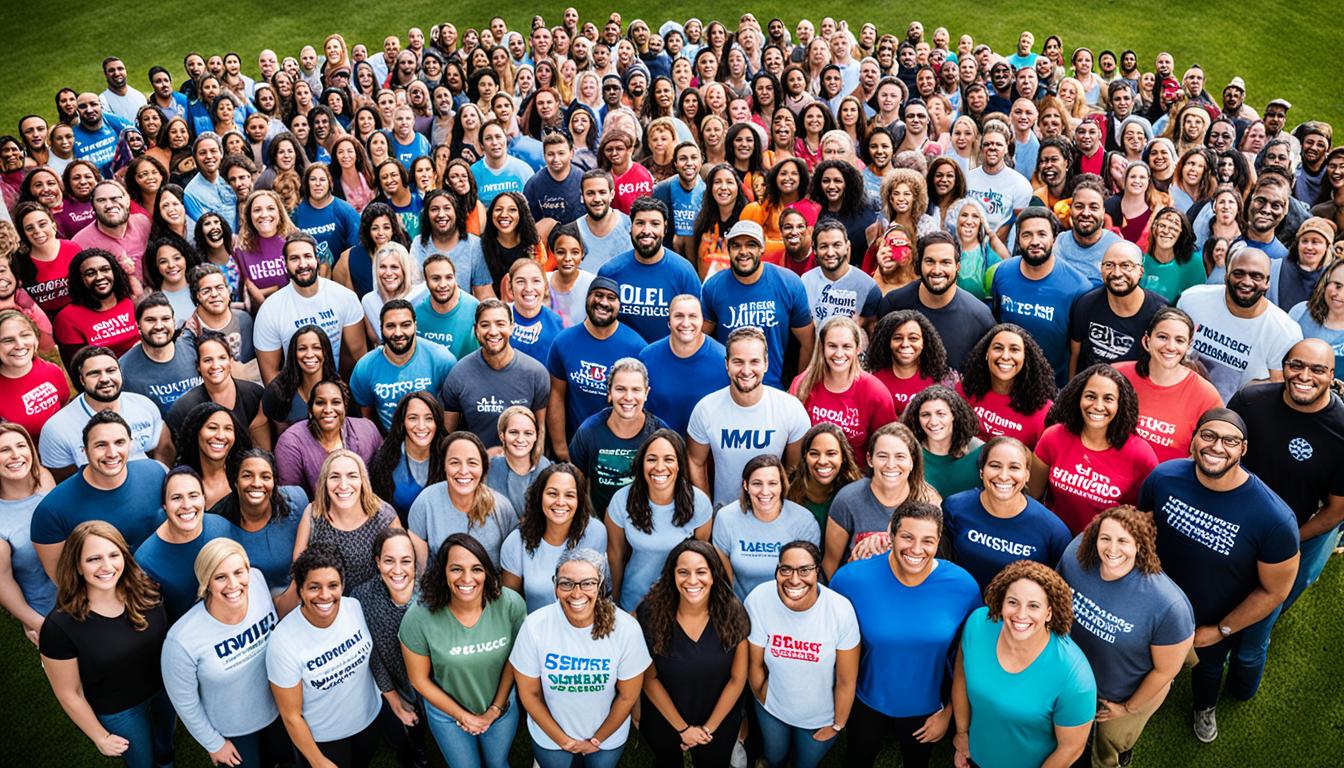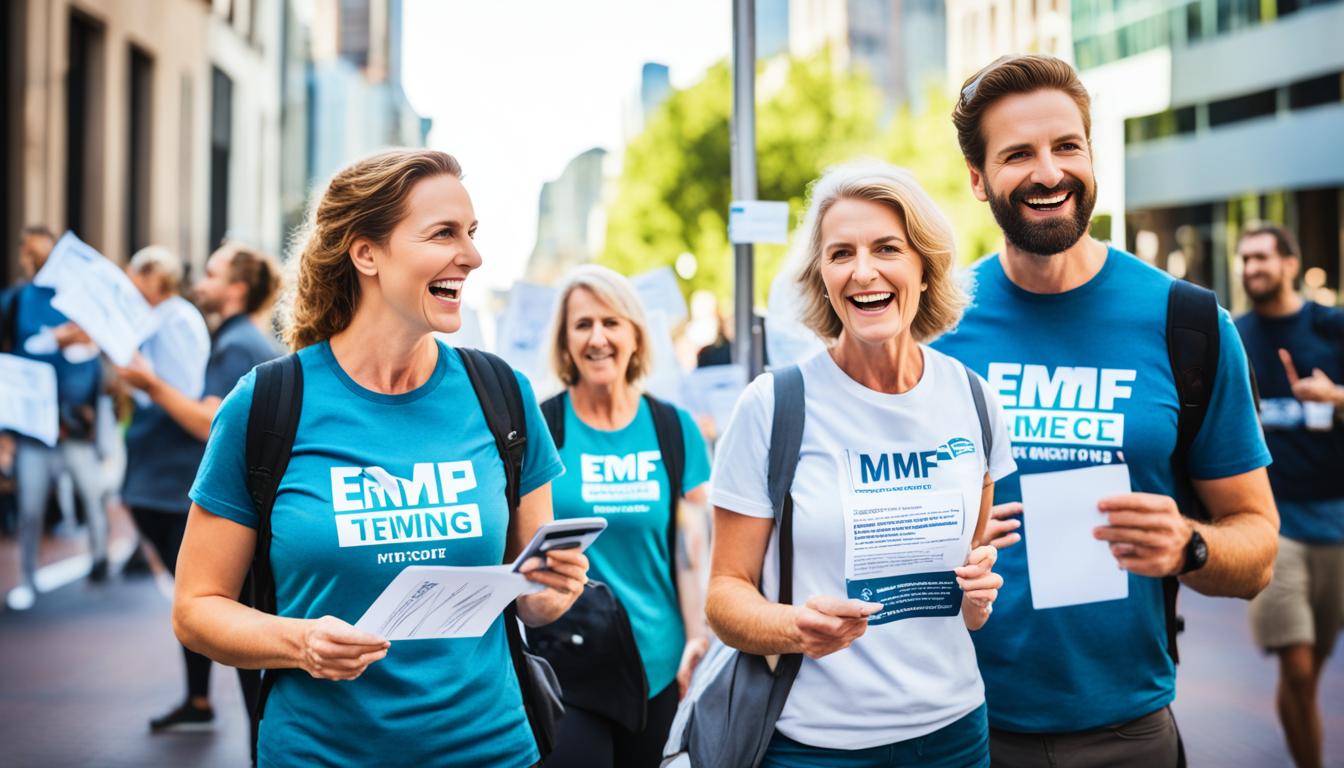Disclosure: This Post Contains Affiliate Links; We earn a commission on purchases.
Non-governmental organizations (NGOs) play a significant role in advocating for safer electromagnetic field (EMF) standards. These organizations work tirelessly to raise awareness about the potential health risks associated with EMF exposure and champion policies that prioritize public health and safety. Despite the lack of official recognition by the World Health Organization (WHO), NGOs continue to advocate for the recognition of electromagnetic hypersensitivity (EHS) and push for the implementation of precautionary measures.
NGOs are instrumental in raising public awareness about EHS and its health implications, even in the absence of formal recognition. These organizations strive to ensure that the precautionary principle is considered in policy decisions related to wireless technologies and EMF exposure. By collaborating with medical professionals, policymakers, and stakeholders, NGOs work towards establishing guidelines and policies that protect public health and prioritize safety.
Key Takeaways
- NGOs play a crucial role in advocating for safer EMF standards.
- They raise awareness about the potential health risks associated with EMF exposure.
- NGOs push for the implementation of the precautionary principle.
- Collaboration with medical professionals and policymakers is essential in establishing protective guidelines.
- NGOs strive to prioritize public health and safety in relation to wireless technologies and EMF exposure.
The Impact of NGO Initiatives on Setting Safer EMF Standards
NGOs have played a critical role in advocating for the establishment of safer electromagnetic field (EMF) standards. Through their continuous efforts, these organizations have been able to influence policy decisions and raise awareness about the potential health risks associated with wireless technologies. By highlighting the importance of precautionary measures, NGOs have called for the revision of existing safety guidelines to better protect the public from potentially harmful EMF exposure.
One noteworthy example is the Australian Communications Media Authority (ACMA), which has received submissions from NGOs advocating for safer EMF standards, specifically regarding the deployment of 5G technology. These submissions stress the need for a thorough implementation of the precautionary principle, urging for a comprehensive assessment of the potential health effects of wireless technologies before their widespread adoption.
The collaboration between NGOs and medical professionals has also been instrumental in promoting safer EMF standards. The Canadian Coalition for Safe Technology (C4ST) is a prime example of this partnership, as they work together to develop resolutions and recommendations aimed at urging government bodies to update safety standards and guidelines. Through their combined expertise and shared dedication, NGOs and medical professionals strive to safeguard public health and address the potential risks associated with EMF exposure.
NGOs have been at the forefront of advocating for safer EMF standards, influencing policy decisions and raising awareness about the potential health risks associated with wireless technologies.
Example of NGO Initiatives: ACMA and 5G Technology
One specific initiative worth highlighting is the Australian Communications Media Authority (ACMA) and its engagement with NGOs regarding the deployment of 5G technology. ACMA has recognized the importance of considering the potential health implications of 5G technology and has actively sought input from NGOs on this matter. Through submissions received from these organizations, ACMA has gained valuable insights into the concerns and recommendations regarding safer EMF standards in relation to 5G.
The collaboration between ACMA and NGOs is a prime example of how the collective efforts of advocacy groups can influence regulatory bodies to prioritize public health and safety in relation to EMF exposure.
| NGO Initiative | Key Focus | Impact |
|---|---|---|
| Australian Communications Media Authority (ACMA) | Advocating for safer EMF standards, specifically in relation to 5G technology | Facilitating dialogue between NGOs and regulatory bodies, considering input from advocacy groups in policy decisions |
| Canadian Coalition for Safe Technology (C4ST) | Collaboration between NGOs and medical professionals to urge the update of safety standards and guidelines | Showcasing the expertise and shared dedication of NGOs and medical professionals in addressing EMF-related health concerns |
The collective impact of NGO initiatives on setting safer EMF standards cannot be understated. By working together with regulatory bodies and medical professionals, these organizations ensure that public health and safety remain top priorities in the ever-evolving landscape of wireless technologies.
The Challenges Faced by NGOs in Promoting Safer EMF Standards
NGOs advocating for safer EMF standards encounter several significant challenges in their efforts. One of the primary hurdles they face is the lack of recognition of Electromagnetic Hypersensitivity (EHS) as a health impairment caused by RF-EMF exposure. This lack of recognition undermines the ability of these organizations to bring attention to the issue and emphasize the importance of establishing safer standards. Despite the growing body of evidence linking RF-EMF exposure to adverse health effects, the World Health Organization (WHO) does not currently acknowledge EHS as being caused by RF-EMF exposure. This discrepancy poses a considerable challenge for NGOs in their advocacy work.
Another challenge faced by NGOs is the existence of differing opinions within the scientific community regarding the causal link between EMF exposure and health effects. While some studies suggest a correlation between EMF exposure and adverse health outcomes, others find limited or inconclusive evidence. These conflicting viewpoints create a barrier for NGOs in mobilizing action and driving changes in existing policies.
Moreover, the influence of industry stakeholders and conflicting interests can hinder the progress made by NGOs in advocating for safer EMF standards. The wireless technology industry often promotes the safety of their products, which may contradict the concerns raised by NGOs and the public. This discrepancy in perspectives can create challenges in gaining support and influencing policy decisions.
“The lack of recognition of EHS as a health impairment, differing scientific opinions, and conflicting interests from industry stakeholders pose significant challenges for NGOs in their mission to promote safer EMF standards.”
Despite these challenges, NGOs continue to work tirelessly to raise public awareness and advocate for policy changes that prioritize public health and safety. By conducting research, organizing educational campaigns, and engaging in dialogue with policymakers, these organizations are instrumental in driving the conversation around EMF exposure and its potential health risks.
Through their efforts, NGOs play a critical role in promoting a more comprehensive understanding of the impact of EMF exposure and the need for precautionary measures. Their work contributes to safeguarding public health and creating a safer environment for individuals and communities in the face of emerging wireless technologies.
Challenges Faced by NGOs in Promoting Safer EMF Standards:
- The lack of recognition of Electromagnetic Hypersensitivity (EHS) as a health impairment caused by RF-EMF exposure.
- Differing opinions within the scientific community regarding the causal link between EMF exposure and health effects.
- Influence and conflicting interests of industry stakeholders.
An image illustrating the challenges faced by NGOs in promoting safer EMF standards.
Current International and National EHS Health Policies
When it comes to electromagnetic hypersensitivity (EHS) and its correlation with RF-EMF exposure, there is an increasing need for comprehensive health policies to address the concerns of affected individuals. This section provides an in-depth review of existing international and national EHS health policies, examining how various organizations and countries approach this issue.
Let’s take a closer look at the current state of EHS health policies, drawing from official documents and websites to provide a well-rounded overview of the subject. Keep in mind that this review will not explore the direct causality link between EHS and RF-EMF exposure. Instead, the focus will be solely on the existing policies and their implications for individuals with EHS.
“Developing EHS health policies is crucial to address the growing concerns surrounding RF-EMF exposure. By considering the unique needs of individuals with EHS, we can foster an environment that prioritizes their well-being while ensuring access to modern technologies.”
– International Health Organization Statement
The International Perspective
On an international level, different organizations and committees have established guidelines and policies to address EHS. The World Health Organization (WHO) recognizes the existence of EHS but states that the symptoms are unrelated to RF-EMF exposure. However, they emphasize the importance of acknowledging the distress experienced by individuals with EHS, focusing on improving their quality of life and managing their symptoms.
Other global organizations, such as the International Commission on Non-Ionizing Radiation Protection (ICNIRP) and the International Electrotechnical Commission (IEC), have also created standards and recommendations to mitigate the potential health effects of RF-EMF exposure. These guidelines consider the general population’s safety and aim to protect individuals, including those with EHS, from excessive exposure to electromagnetic fields.
National Approaches
At the national level, countries have implemented their own policies to address EHS and protect the health of their citizens. For example, Sweden has recognized EHS as a functional impairment and has developed guidelines to support individuals with EHS. Similarly, Canada has established provisions for accommodating individuals with EHS and ensuring their rights and accessibility in various domains.
The United States, through agencies like the Federal Communications Commission (FCC) and the Environmental Protection Agency (EPA), has set exposure limits to protect the public from potential harm associated with RF-EMF exposure. These limits are based on existing research and aim to balance the benefits of wireless technologies with public health considerations.

This image represents the significance of EHS health policies in protecting individuals.
The Way Forward
While there are variations in international and national approaches to EHS health policies, overall, the recognition of EHS as a health concern and the dedication to improving the well-being of affected individuals are consistent themes.
As the understanding of EMF-related health effects continues to evolve, it is crucial for policymakers to consider the unique challenges faced by individuals with EHS. By revisiting and adapting existing policies, countries can ensure that the needs of this population are adequately addressed while fostering a safe technological environment for everyone.
Individual Sensitivity to EMF and the Need for Further Research
Individual sensitivity to electromagnetic fields (EMF) has been widely recognized as a phenomenon, with individuals responding differently to the same level of exposure. This variability highlights the complexity of the impact that EMF can have on human health and the need for further research to better understand and characterize individual sensitivity.
The ongoing search for biomarkers that can effectively identify and quantify individual sensitivity to EMF is crucial in establishing safer EMF standards. Biomarkers provide objective measures that can help determine an individual’s susceptibility to the health effects of EMF exposure. However, the development of reliable biomarkers is still a challenge in the field of RF-EMF research.
Similar challenges have been faced in the field of ionizing radiation research, where efforts to identify biomarkers for individual sensitivity have encountered impediments such as the standardization of functional assays, replication studies, and the heterogeneity of patient cohorts.
A comprehensive understanding of individual sensitivity to RF-EMF radiation is vital for the development of effective and tailored protective measures. By identifying biomarkers that can accurately assess an individual’s response to EMF, it becomes possible to establish personalized exposure limits and guidelines.
Furthermore, research should also investigate the potential roles of non-radiation risk factors in individual sensitivity to EMF. Factors such as genetics, co-exposure to other environmental agents, and individual health conditions may play a significant role in determining an individual’s susceptibility to the health effects of EMF exposure.
Impasse in RF-EMF Research:
“Despite advances in RF-EMF research, the identification of biomarkers that can reliably indicate individual sensitivity remains elusive. Standardization efforts and replication studies are necessary to overcome this impasse and pave the way for establishing more precise and effective EMF safety guidelines.”
The Urgency for Further Research:
- Developing reliable biomarkers to identify and characterize individual sensitivity to RF-EMF radiation
- Exploring non-radiation risk factors to better understand individual susceptibility
- Standardizing functional assays and replication studies
- Addressing the heterogeneity of patient cohorts
By addressing these research impasses, we can continue to enhance our understanding of individual sensitivity to EMF and lay the foundation for establishing safer EMF standards that prioritize the well-being of individuals and communities.
| Biomarker Research Challenges | Potential Solutions |
|---|---|
| Standardization of functional assays | Collaboration among researchers to establish standardized protocols |
| Replication studies | Funding support for independent replication studies |
| Heterogeneity of patient cohorts | Large-scale studies involving diverse populations to capture variations in sensitivity |

The Role of NGOs in Public Health Advocacy
Non-Governmental Organizations (NGOs) play a vital role in advocating for public health, particularly in relation to wireless technologies and radiation protection. These organizations are dedicated to raising awareness about the potential health risks associated with electromagnetic field (EMF) exposure and advocating for protective measures.
NGOs collaborate with medical professionals, policymakers, and other stakeholders to develop guidelines and policies that prioritize public health and safety. Through their initiatives and campaigns, they aim to ensure that EMF-related health risks are considered in policy decisions and that the public receives accurate and reliable information.
By working tirelessly to promote public health, NGOs contribute to creating a safer environment in relation to wireless technologies. They actively participate in research and public forums to provide evidence-based recommendations that address the potential risks of EMF exposure.
“NGOs play a critical role in advocating for public health. By raising awareness and pushing for protective measures, they ensure that the potential risks associated with wireless technologies are addressed, and individuals are empowered to make informed decisions about their health.” – Dr. Sarah Johnson, Public Health Expert
NGOs also serve as a bridge between the public and government bodies, bringing public health concerns to the attention of policymakers. Through their advocacy efforts, they strive to influence policy changes that prioritize the health and well-being of individuals and communities.
The initiatives undertaken by NGOs in the field of public health advocacy are of paramount importance. By disseminating information, driving discussions, and promoting transparency, NGOs help shape the public narrative surrounding wireless technologies and radiation protection.
Impactful NGO Campaigns
NGOs have launched several impactful campaigns to raise awareness about the potential risks associated with EMF exposure:
- The “Spread the Word” campaign, led by the International EMF Alliance, aims to educate the public about the health effects of EMF radiation and empower individuals to reduce their exposure.
- The “Safer Wireless” campaign, spearheaded by the EMF Safety Network, calls for responsible use of wireless technologies and advocates for the development of safer alternatives.
- The “Protect Our Children” initiative, led by Moms Across America, focuses on raising awareness about the potential risks of EMF radiation on children’s health and advocating for stricter regulations.
These campaigns, among many others, highlight the pivotal role of NGOs in driving public health advocacy and fostering a safer environment for all.
Conclusion
NGOs play a crucial role in advocating for safer EMF standards and raising awareness about the potential health risks associated with wireless technologies. Despite the challenges they face, NGOs continue to push for policy changes and the implementation of the precautionary principle to establish safer EMF standards. Through their dedicated efforts, these organizations ensure the protection of public health and the well-being of individuals and communities.
Despite the lack of recognition for electromagnetic hypersensitivity (EHS) and conflicting opinions within the scientific community, NGOs strive to bring attention to the issue and emphasize the importance of setting safer standards. Their advocacy and educational initiatives contribute to a safer environment, encouraging public health policies that prioritize the well-being of individuals in relation to EMF exposure.
It is crucial to recognize and appreciate the significant contributions made by NGOs in promoting a safer environment and continue supporting their advocacy efforts. By supporting these organizations, we can collectively work towards safer EMF standards, ensuring the protection and well-being of individuals in the face of evolving wireless technologies.
Source Links
- https://www.degruyter.com/document/doi/10.1515/reveh-2022-0108/html
- https://www.ncbi.nlm.nih.gov/pmc/articles/PMC10820716/
- https://c4st.org/wp-content/uploads/2019/06/12-Payne-NGO-Advocacy.pdf

Subscribe to Our Newsletter










